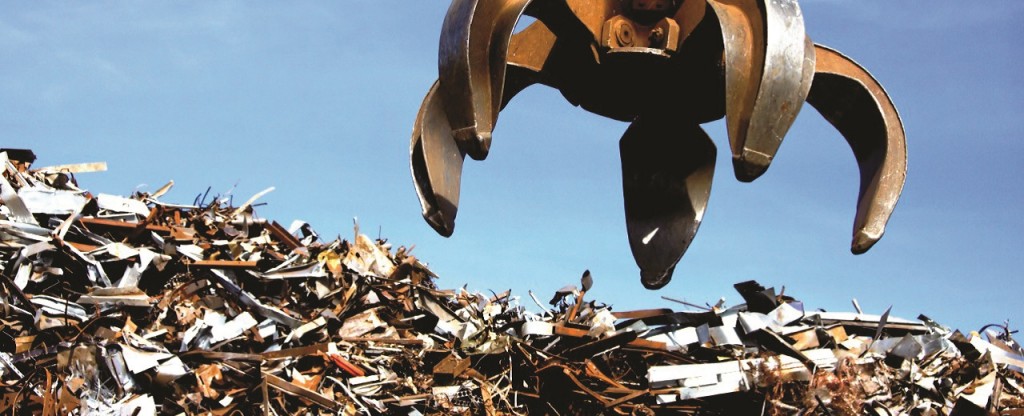
In scrap metal recycling, many would say that 2015 was perhaps the worst year in a decade or more. The relatively low market prices for recovered steel and other ferrous commodity grades have been challenging for most in our industry, to say the least. For those who collect, haul and sell obsolete materials to scrap yards, with lower demand and lower market prices for those materials, all of this translates directly to less revenue. It is the same for scrap yards and those who then sell recovered materials to mills and the manufacturing sector.
“There’s certainly been consolidation within the industry,” comments Joe Pickard, the Institute of Scrap Recycling’s chief economist and director of commodities. “Unfortunately, we have seen some companies close their doors – some who have been in business for two or three generations, which is really sad to see. Others, we certainly see idling their capacity, and very few shredders today are running at full capacity.”
Many recyclers are simply stockpiling material, waiting for opportune sales and for prices to come back up overall. Pickard says many are also focused on improving the purity and quality of their output, are taking the time to focus on operational efficiencies, or are diversifying into other materials, including plastics, e-waste and fibres.
“Our industry needs to keep the long term in perspective,” says Pickard. “We’re facing difficult market conditions currently, but the great thing about the scrap recycling industry is that it’s full of people who are incredibly innovative and entrepreneurial by nature – who are going to come out of this downturn even leaner and stronger than when they came into it.”
Focus on quality, operations and diversification
With diminished supply on one hand, and diminished demand on the other, many recyclers are focusing increasingly on the operational side of their business.
“We see our members working hard to save a penny here and a penny there,” says Pickard. “Many are focusing on improving their site safety. And the leading recyclers these days are truly focused on quality of output. Many are not trying to hit home runs every time they’re at the plate. Just singles and doubles – in terms of looking for smart business transactions.”
For 2016, many will agree that the scrap recycling industry is likely set to face a lot of the same issues and challenges seen in 2015.
“When you’re talking about slower growth in China, a relatively strong dollar, weak commodity prices and uneven U.S. manufacturing growth, those are trends that unfortunately we continue to see today,” says Pickard.
But Pickard is also something of an optimist at heart, and hints at one of the lights at the end of the tunnel.
“I’ll tell you what I hear more of with scrap metal recyclers, is increasing product diversification,” he says.
“Traditional metal recyclers are looking at other commodities like plastics, electronics, paper and fibre. They are starting to look more and more at any sector, any commodity, where they can try to pick up some margin. Product diversification is a trend we’re seeing more of in the metals recycling industry.”
Three factors affecting the price of ferrous scrap
In recent years, there has been downward pressure on the entire recycled ferrous supply chain, making recovered steel and other ferrous less competitive in global markets.
“This is largely due to an oversupply of iron ore, globally, which brings down its price, along with recycled steel,” comments ISRI’s Joe Pickard.
“A relatively high U.S. dollar makes U.S. ferrous scrap exports less competitive, compared to scrap coming from Europe or Japan, for example,” says Pickard. “It also makes steel imports into the U.S. more attractive, which displaces demand for domestically produced steel and the use of domestic ferrous scrap.”
In Canada, with the lower dollar, this equation is flipped somewhat. Canadian scrap imports into the U.S. and other foreign markets have been attractive, but export flow from the U.S. and other foreign markets into Canada has been down.
The slowdown in the oil & gas and manufacturing sectors, in both Canada and the U.S., has greatly affected the recycling industry in terms of demand for steel, and by extension ferrous scrap demand.
“In recent years, the energy sector has been such an important source of growth for steel manufacturers,” says Pickard. “When you see the prices come down so sharply on crude oil, and dramatic drops in rig counts, there is diminished demand for tubular goods from steel producers, for example.
“On the plus side, there are some benefits to cheap oil prices for some recyclers,” Pickard says. “With oil recently between $26 and $28 per barrel, it tends to bring down transportation costs and other operational costs. Still, the slowdown on the demand side far outweighs whatever cost savings they get on the operations side.” He adds, “Steel production overall in the U.S. was down in 2015 – about 8 to 10 percent. So you’ve got less steel being produced, and less demand for ferrous scrap.”
RPN


